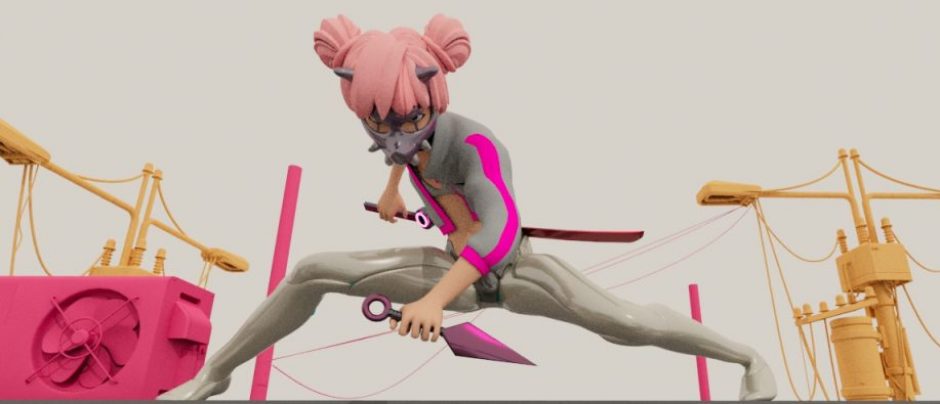While game animators in larger teams typically specialize, those at smaller studios may wear the many hats listed below. Regardless, even when specializing, it is incredibly valuable to understand other areas of game animation to open up opportunities for creativity across disciplines—often, the best results occur when lines are blurred such that an animator might excel in all moving aspects of a game.
Player Character Animation
The primary and easily most challenging aspect of game animation is the motion of characters under the player’s control. This occurs in all but the most abstract of games and therefore is an important skill to focus on and for any game animator to have under his or her belt.Character animation style and quality can vary greatly across different game types (and studios), depending upon their unique goals, but one thing is becoming more apparent as the medium progresses—bad character animation is unacceptable these days. Bringing up the baseline standard is one of the main goals of this book.

Facial Animation
A relatively recent requirement, (due to advances in the quality of characters enabling us to bring cameras in close), is that even the most undiscerning player will be able to instinctively critique bad motion due to experience with other humans.

How do we avoid these pitfalls when aiming to create believable characters that serve our storytelling aspirations? There are many decisions throughout a project’s development that must work in concert to bring characters to life that are not just believable, but appealing.
Cinematics & Cutscenes
A mainstay of games with even the slightest degree of storytelling, cinematic cutscenes give developers the rare opportunity to author scenes of a game enough so that they play out exactly as they envision. A double-edged sword, when used sparingly and done well, they can bring us much closer to empathizing with characters, but used too much and they divorce us from not just our protagonists but the story and experience as a whole.A well-rounded game animator should have a working knowledge of cinematography, staging, and acting to tell stories in as unobtrusive and economical a manner as possible.
Technical Animation
Nothing in games exists without some degree of technical wrangling to get it working, and game creation never ceases to surprise in all the ways it can break. A game animator should have at least a basic knowledge of the finer details of character creation, rigging, skinning, and implementation into the game—even more so if on a small team where the animator typically owns much of this responsibility alone.A game animator’s job only truly begins when the animation makes it into the game—at which point the systems behind various blends, transitions, and physical simulations can make or break the feel and fluidity of the character as a whole.

Nonplayer Characters
While generally aesthetically similar, the demands of player animations differ greatly from those of nonplayer characters (NPCs). Depending on the goals and design requirements of the game, they bring their own challenges, primarily with supporting artificial intelligence (AI) such as decision-making and moving through the world. Failing to realize NPCs to a convincing degree of quality can leave the player confused as to their virtual comrades’ and enemies’ intentions and believability.
Cameras
The camera is the window through which the game world is viewed. Primarily concerning player character animation in 3D games, a bad camera can undermine the most fluidly animated character. A good game animator, while perhaps not directly controlling the implementation, should take a healthy interest in the various aspects of camera design: how it reacts to the environment (colliding with walls, etc.), the rotation speed and general rigidity with which it follows player input, and the arc it takes as it pivots around the character in 3D games. It’s no wonder a whole new input (joypad right-stick) was added in the last decade just to support the newly required ability to look around 3D environments.

Environmental and Prop Animation
Although it may not be as glamorous as character animation, the environment can bring soulless places to life. In addition, the interactive gameplay of characters, props, and environment is an essential part of the game, which can make the player immersed in the virtual game world well.
The use of weapons (mainly guns and melee types) is the backbone of the game, and the knowledge required to produce and maintain these types of animations effectively and convincingly is an important part of the animation process of most games. And they are all essential for players to discover a more interactive world.
